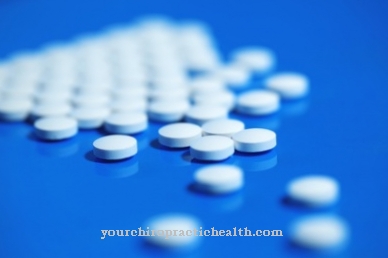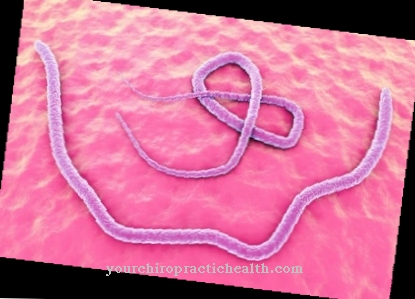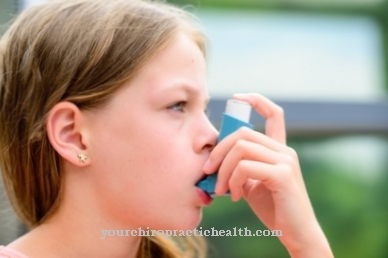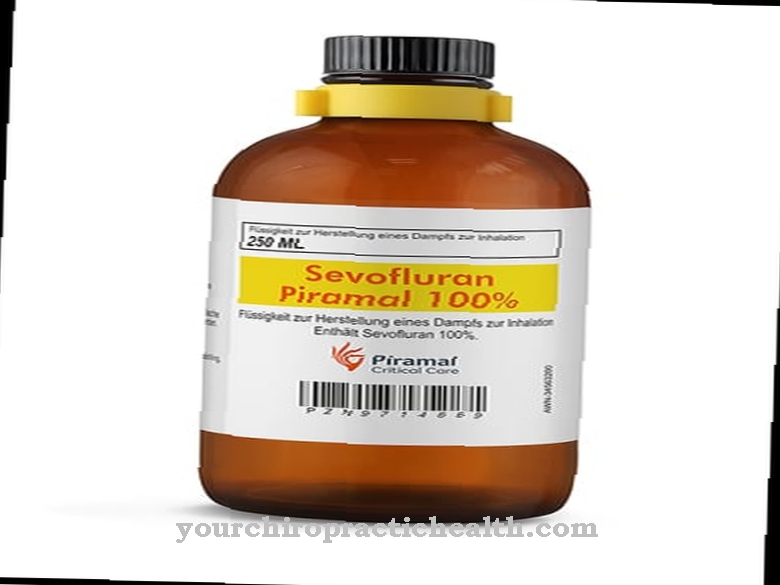Terfenadine is an antiallergic drug and is used to treat allergic reactions. Since it competes for the receptor site for histamine in the human organism, the endogenous hormone histamine can no longer dock. Histamine is responsible for the allergy symptoms like itching and redness. Terfenadine is given in tablet form. It has been withdrawn from the market in some countries because it has caused irregular heartbeat in some patients. There are also other side effects of the drug.
What is Terfenadine?
Terfenadine is an antihistamine. It is used to treat allergies. It was first made in the 1970s and launched in 1982. The active ingredient was available without a prescription for a very long time. Terfenadine is sold in Germany under the drug names Hisfedin®, Terfemundin® and Terfedura®.
Terfenadine is a so-called racemate. A racemate is an active ingredient which is composed of two molecules in a ratio of one to one and shows pharmacological activity. The active ingredient is a crystalline, white powder and is very sparingly soluble in water.
Terfenadine is a prodrug. Prodrugs are active ingredients that initially have no pharmacological effect. They only develop their effect through a transformation step in the human body. The pharmacologically effective form of transformation is called Fexofenadine designated. This substance belongs to the second generation of antihistamines.
Terfenadine has been withdrawn from the market in many countries because of its possible life-threatening side effects. Fexofenadine per se is approved as a possible alternative for the treatment of allergic symptoms.
Pharmacological effect
Terfenadine has an antiallergic and antihistamine effect. Accordingly, the drug is used in human medicine to treat allergic reactions. Antihistamines are active ingredients that inhibit the body's own hormone histamine. They have an anti-inflammatory and antipruritic effect. These drugs can also have a calming and sleep-inducing effect.
Terfenadine competes in the bronchial muscles, in the uterus and in the digestive tract for the binding receptor for histamine. This docking point for the body's own neurotransmitter is also called the H1 receptor. Due to the terfenadine, the histamine can no longer bind to the receptor and cannot develop its effect. This will reduce the symptoms of an allergy caused by histamine. Itching, redness and edema formations decrease.
Medical application & use
In Germany, the active ingredient terfenadine is approved for the treatment of allergic conjunctivitis and allergic rhinitis. Allergic rhinitis is also known as hay fever. Conjunctivitis is conjunctivitis of the eye. The drug can also be used to treat allergic skin reactions such as hives.
Terfenadine must not be given to patients with pre-existing heart diseases, impaired liver function, anorexia, vomiting, diarrhea and disorders of the magnesium or potassium balance. Treatment with simultaneous therapy with other drugs such as antibiotics or antifungal agents is also a contraindication for this active ingredient.
Terfenadine should not be prescribed if the patient is taking drugs to treat cardiac arrhythmias. In addition, pregnant women and children are not allowed to take the active ingredient. People weighing less than 50 kilograms should not be treated with the substance.
Terfenadine should be taken as directed by the doctor. Usually one to two tablets per day are prescribed depending on the severity of the symptoms. The tablets should be administered whole with plenty of liquid. Terfenadine should not be taken with grapefruit juice. This drink can immensely delay the breakdown of the substance in the body. The drug should be stored out of the reach of children.
Risks & side effects
As a rule, the drug is well tolerated. However, side effects such as insomnia, tiredness, dizziness, drowsiness, gastrointestinal complaints, depression or muscle tremors can occur.
In many countries, such as Switzerland, terfenadine has been withdrawn from the market because in some cases severe cardiac arrhythmias occurred after ingestion. These can cause ventricular fibrillation and ultimately be fatal. Symptoms such as loss of consciousness, convulsions, dizziness, low blood pressure, or palpable heartbeats can indicate these arrhythmias. Due to this fact, special care should be taken when taking the drug.



























